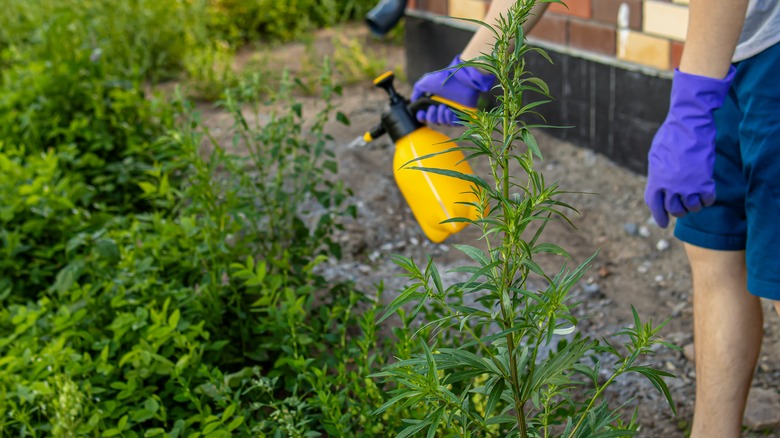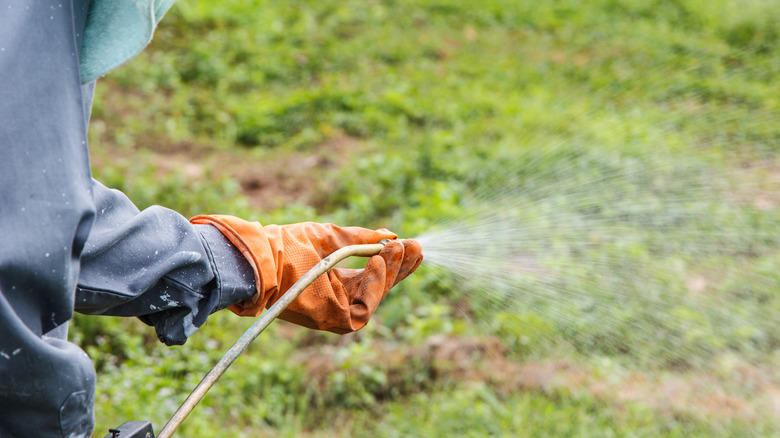The Most Important Thing To Know Before Using Killzall Weed & Grass Killer
If the weeds in your yard are getting out of control and you're having trouble getting on top of the problem, you might be tempted to resort to using a herbicide in an effort to rid your garden of all those pesky weeds. One such product on the market is Killzall, but the most important thing that you need to know before using this weed and grass killer is that you should not use it on your lawn and should take special care when applying it anywhere near your prized plants.
Killzall is what's known as a post-emergent or non-selective herbicide and will kill any plant, including your lawn grass, that it comes into contact with. If you decide you want to use Killzall, you should understand the different types of weed killers to consider before spraying your yard. The main active ingredient in Killzall is glyphosate, which is known as a systemic herbicide. Once sprayed, it will dry on any weed that it lands on and start to act quickly as the plant absorbs the poisonous substance, although visible effects may take several days to manifest. There is much controversy surrounding the use of glyphosate and whether it is safe, which is why you should think twice about using this popular weed killer. Essentially, this product is recommended for killing weeds along fence lines, walkways, driveways, and around buildings, mature trees, and shrubs.
How to safely use Killzall in your yard
Before you use a herbicide such as Killzall in your garden, make sure that you read the application instructions on the label. As per the label on this product, it can be harmful if absorbed through the skin and can cause moderate eye irritation. For this reason, you should wear protective clothing such as a long-sleeved shirt, gloves, and eye protection before spraying this product on your weeds. It's also important to keep pets and children away from any areas that you've treated.
You also want to choose a calm day and avoid spraying during windy weather or when there's a likelihood of rain. If there's even just the slightest breeze, the spray can easily drift onto your desirable plants and kill them. While the product can dry on weeds in as little as two hours, it's wise to hold off spraying until there's no rain predicted for the next 24 hours. To get the most effective results, spray Killzall only onto the weeds you want to kill on a warm, sunny day when the temperature is above 60 degrees Fahrenheit. Apart from using Killzall as a spray according to the directions on the pack, it can also be used as a spot treatment on hard-to-kill weeds, but always take care not to get the herbicide onto the plants you don't want to kill. If you have any doubts about using a non-selective herbicide such as Killzall, you might want to consider using the best non-toxic products and methods for tackling pesky weeds.

